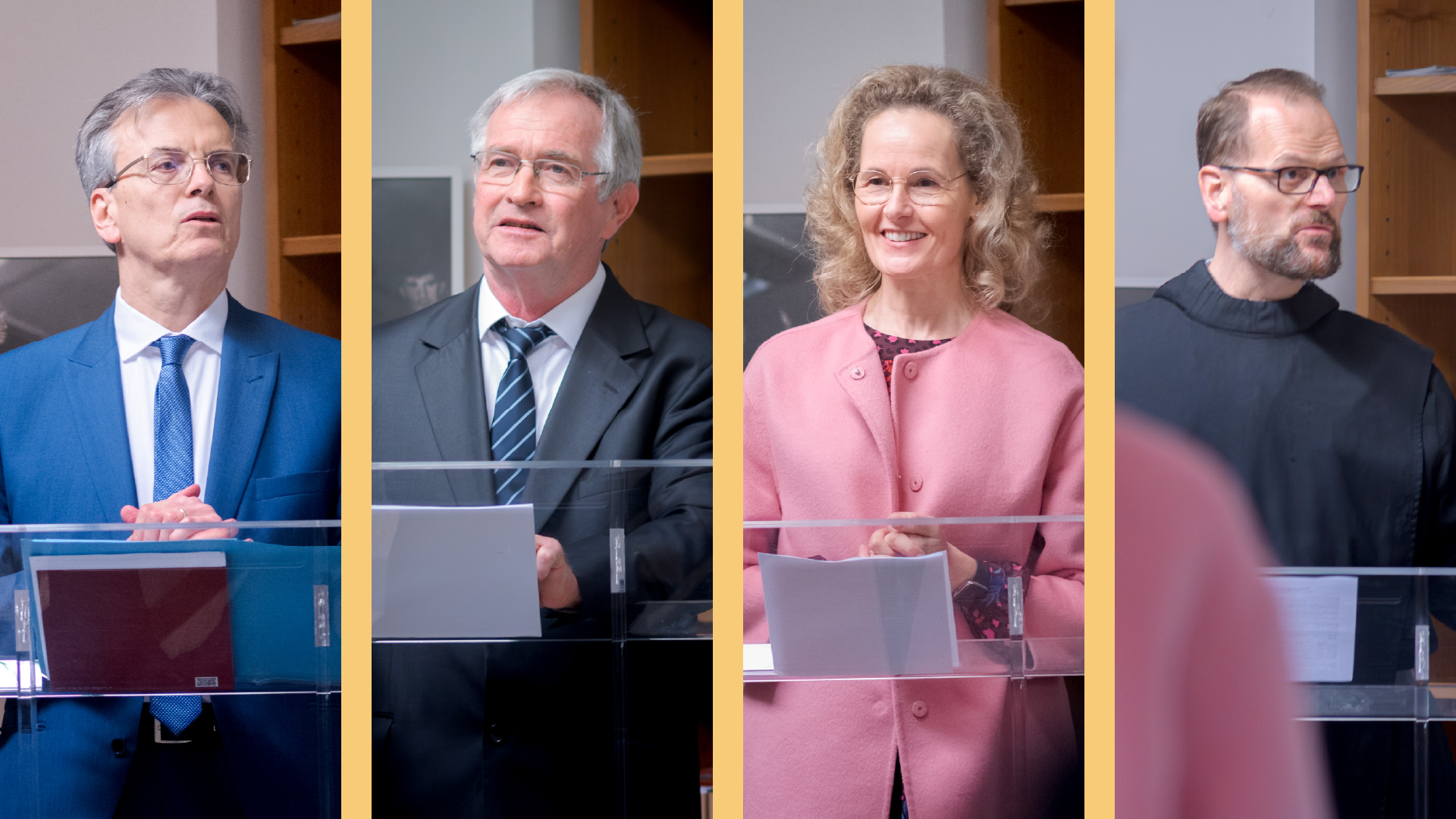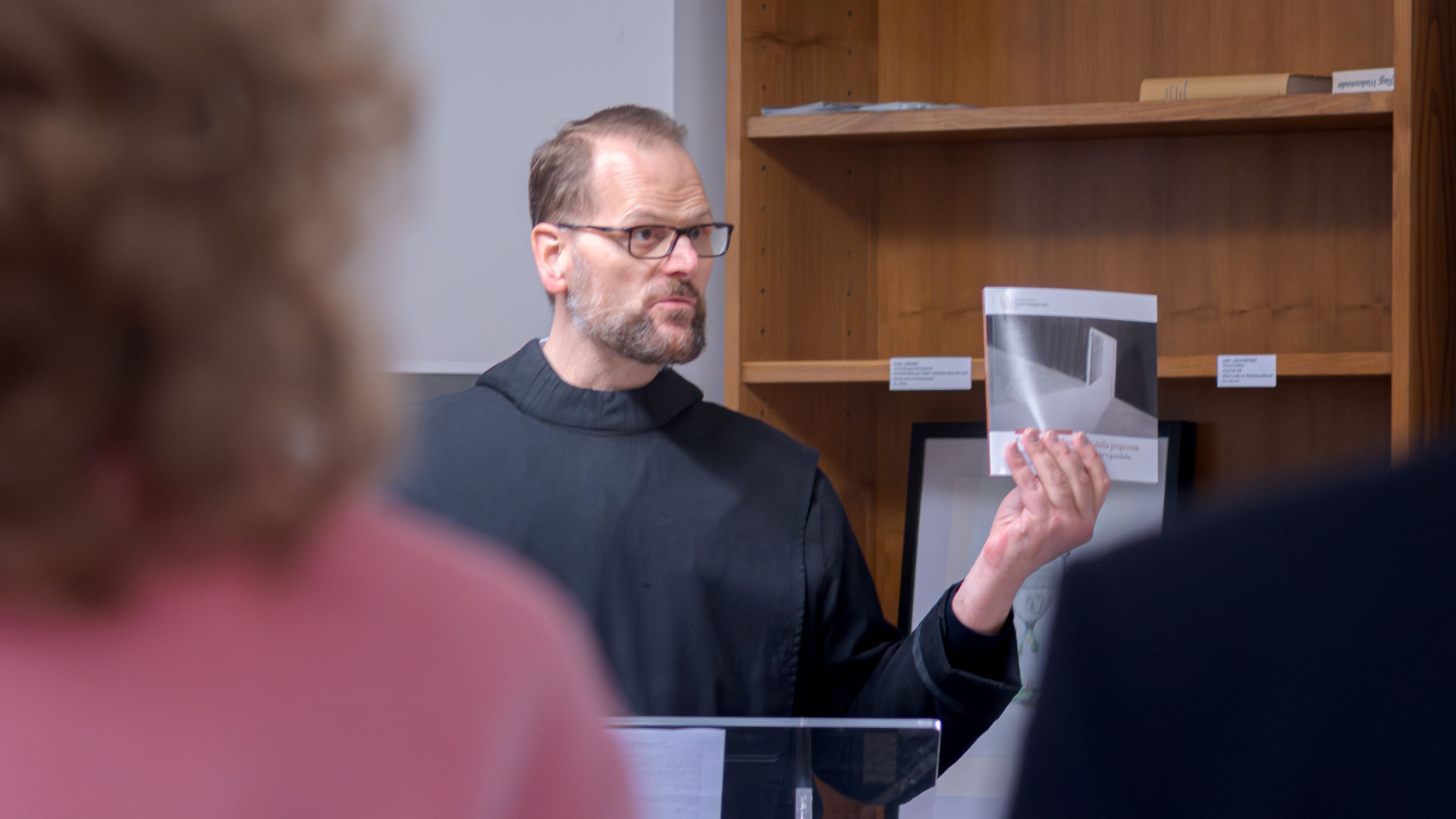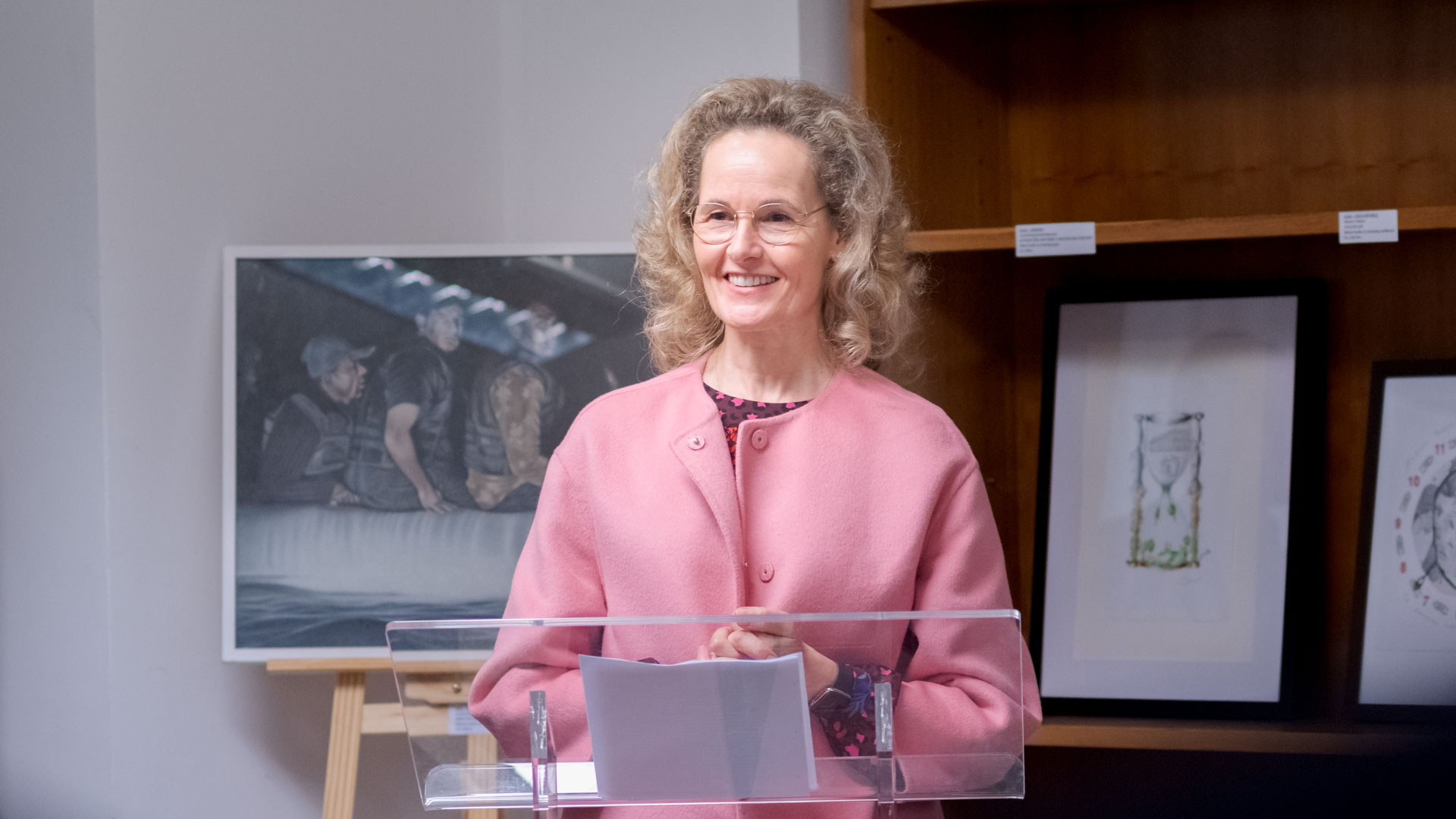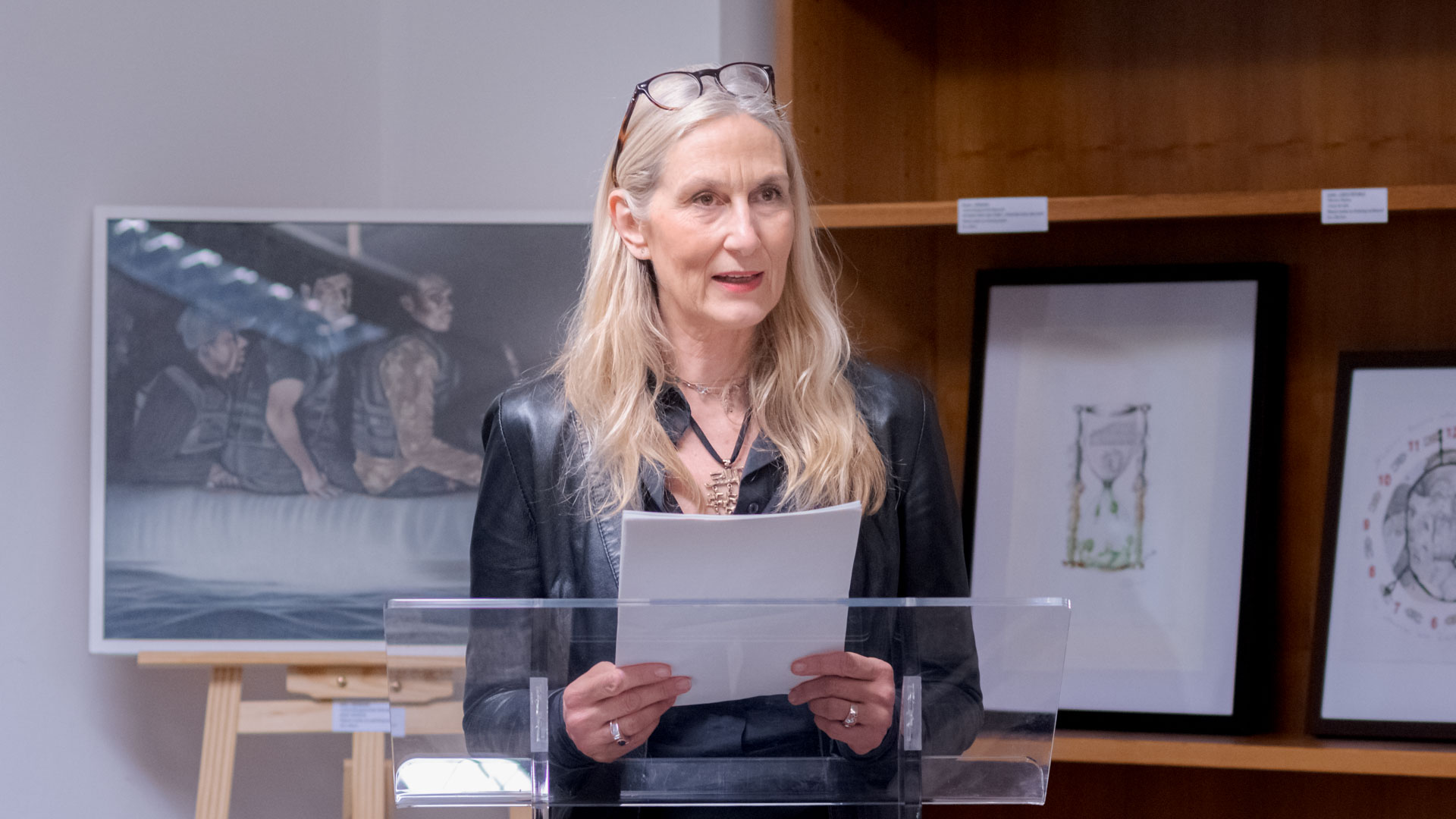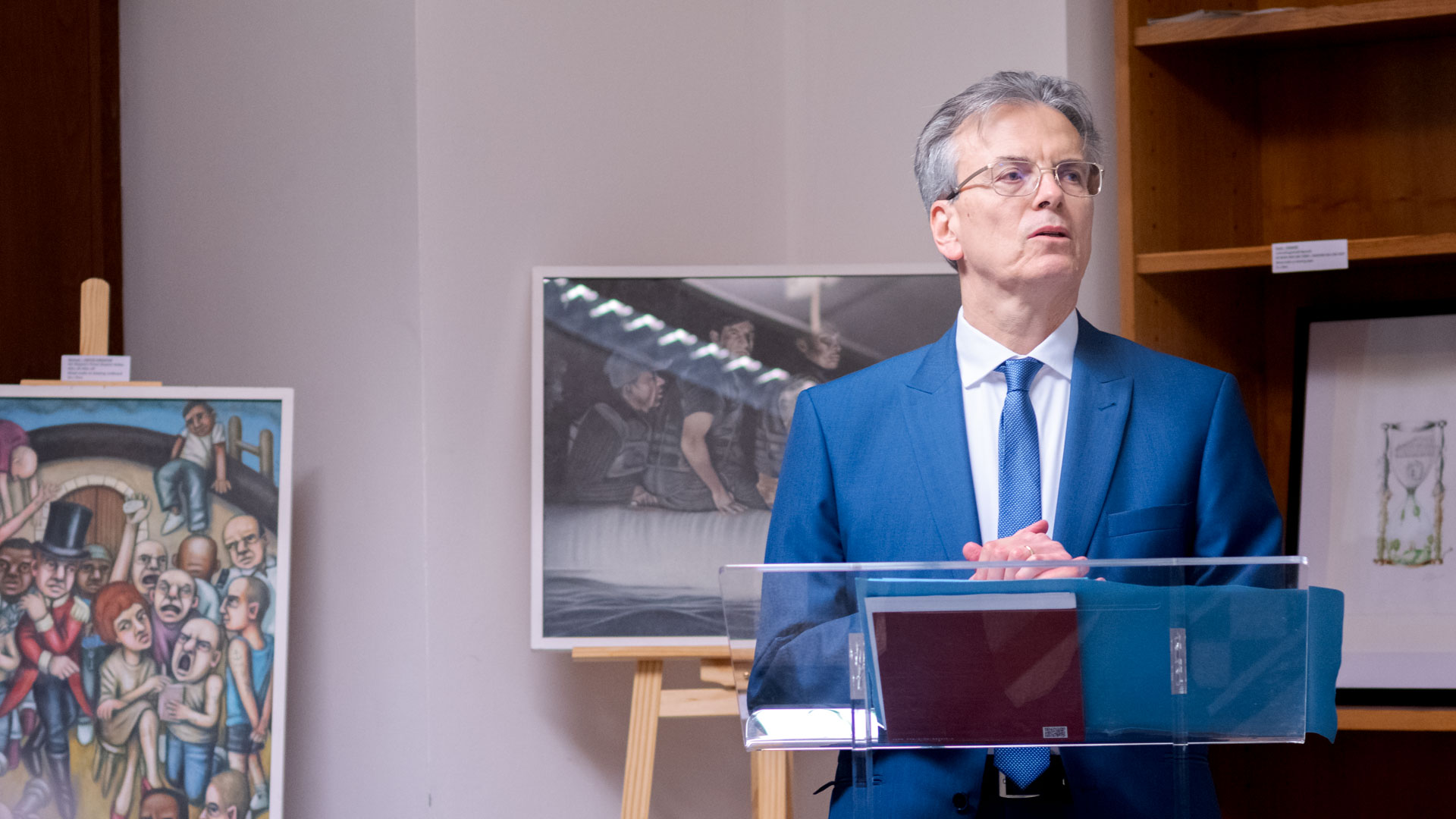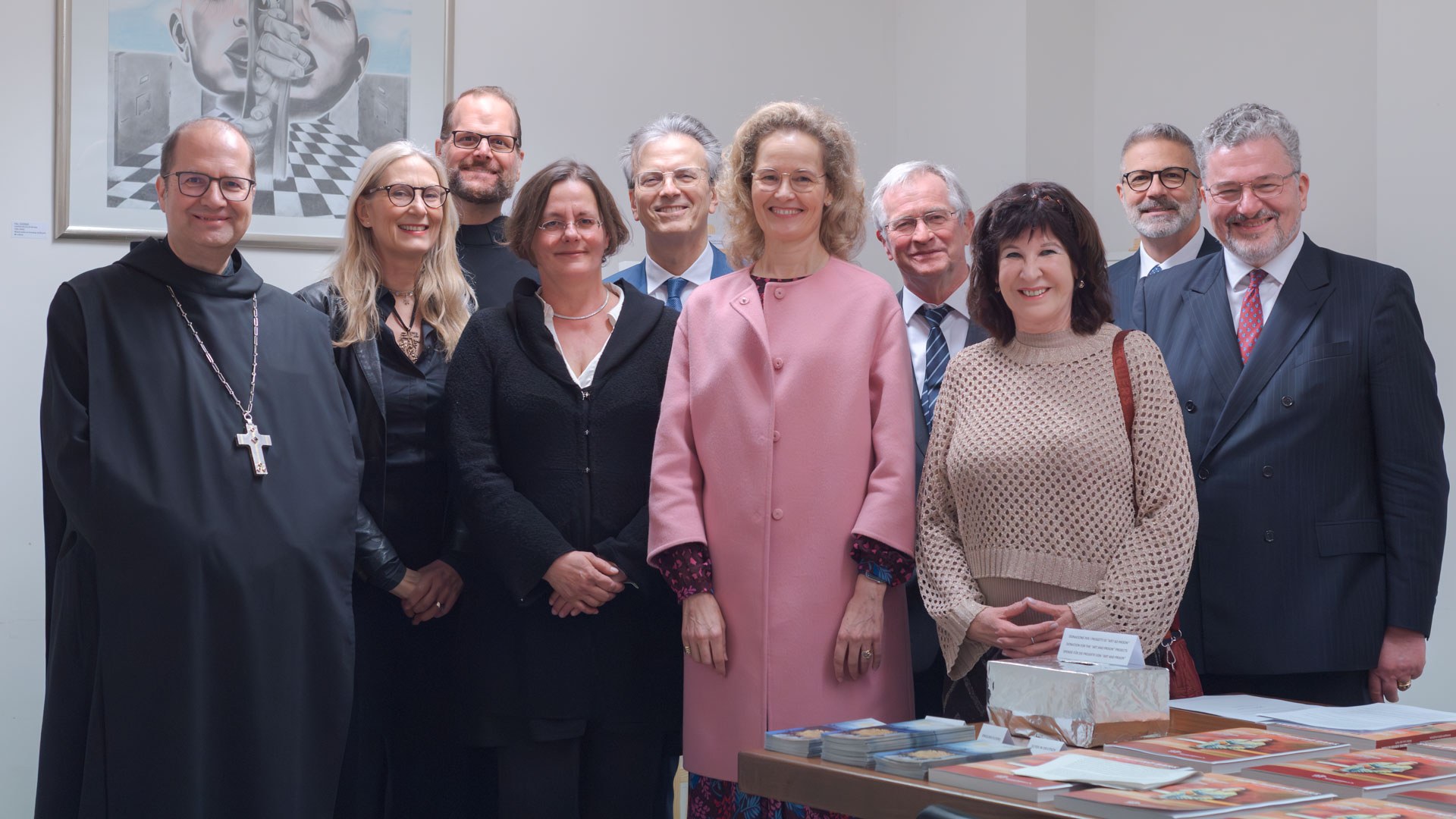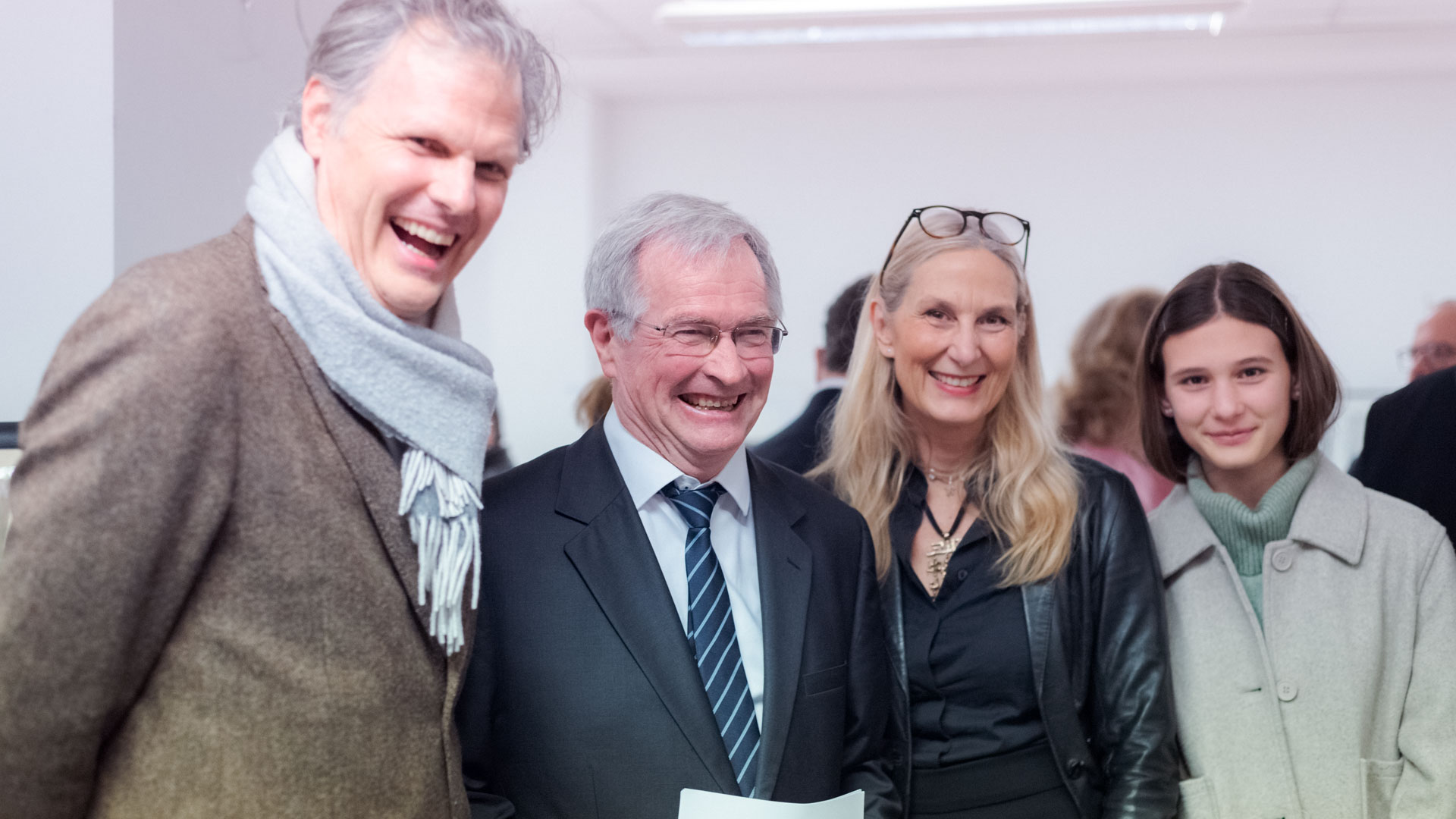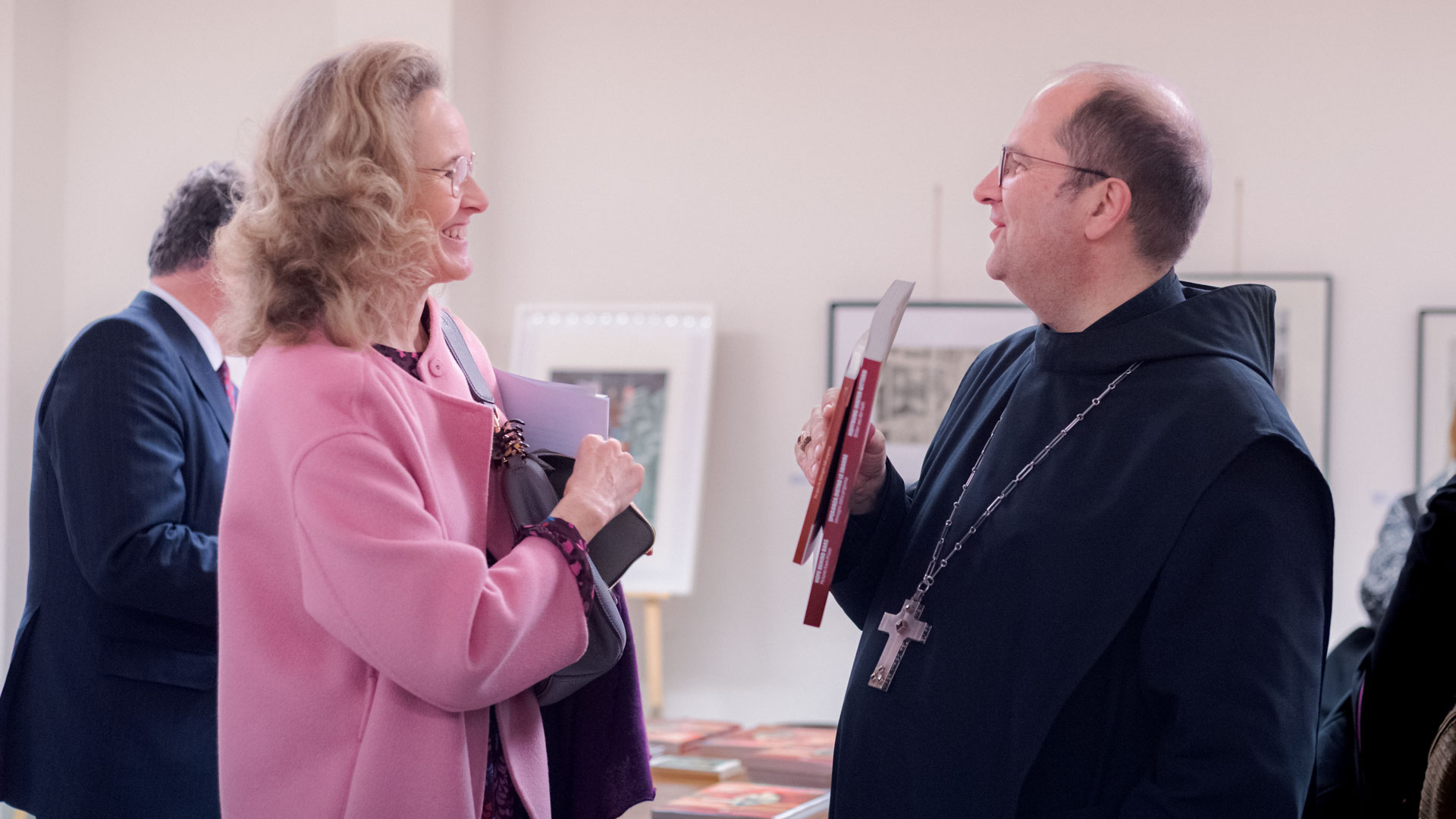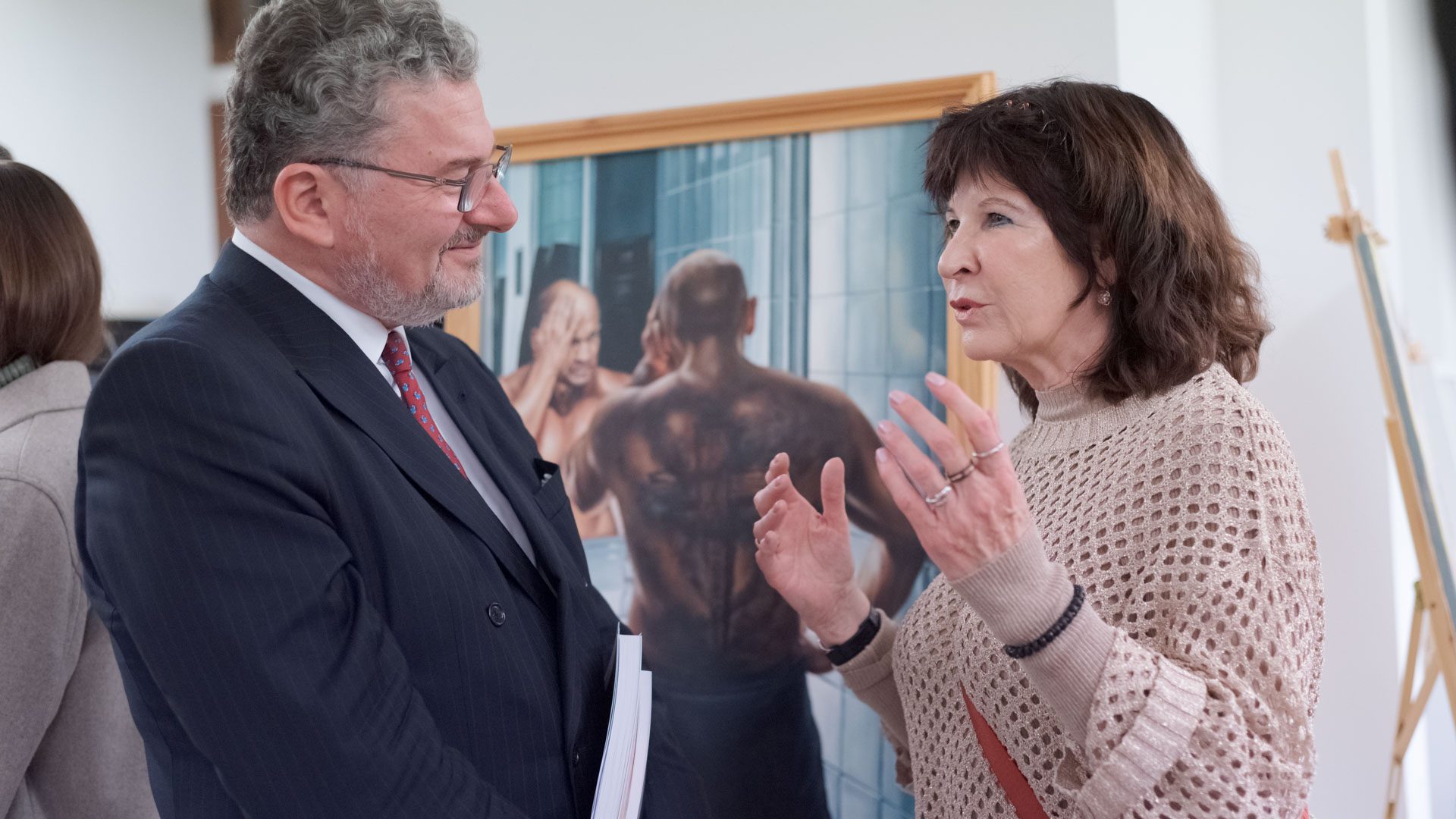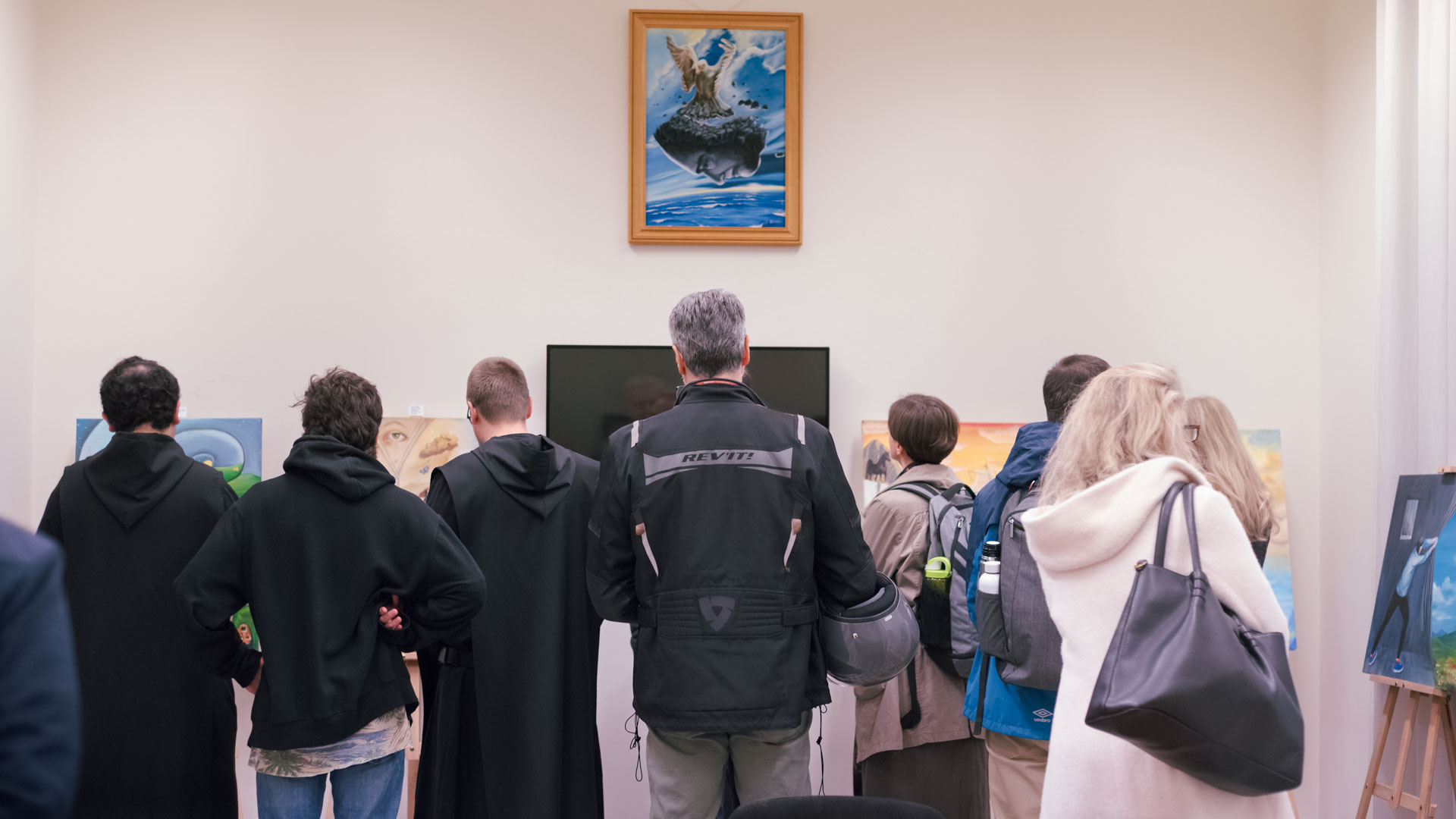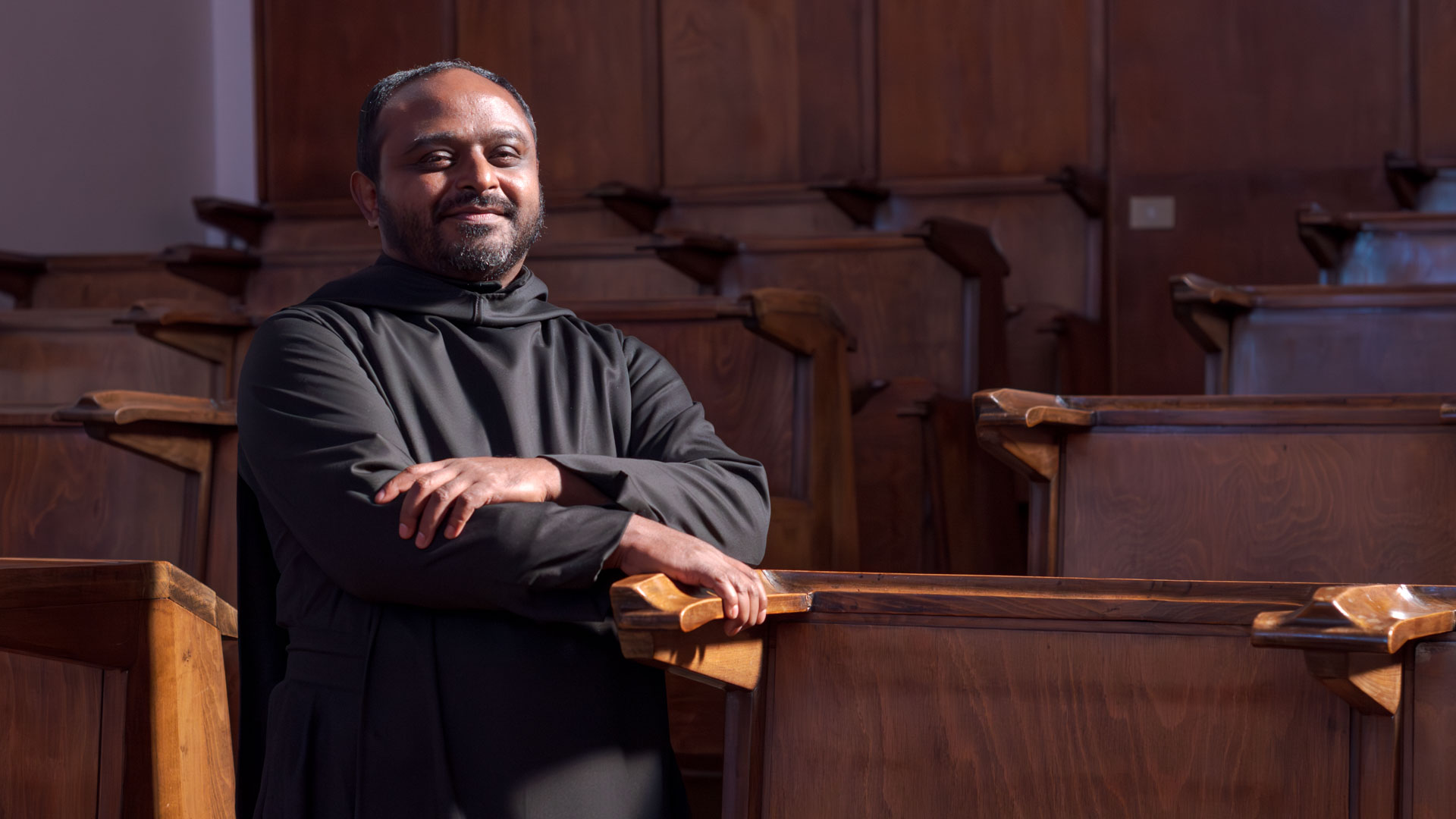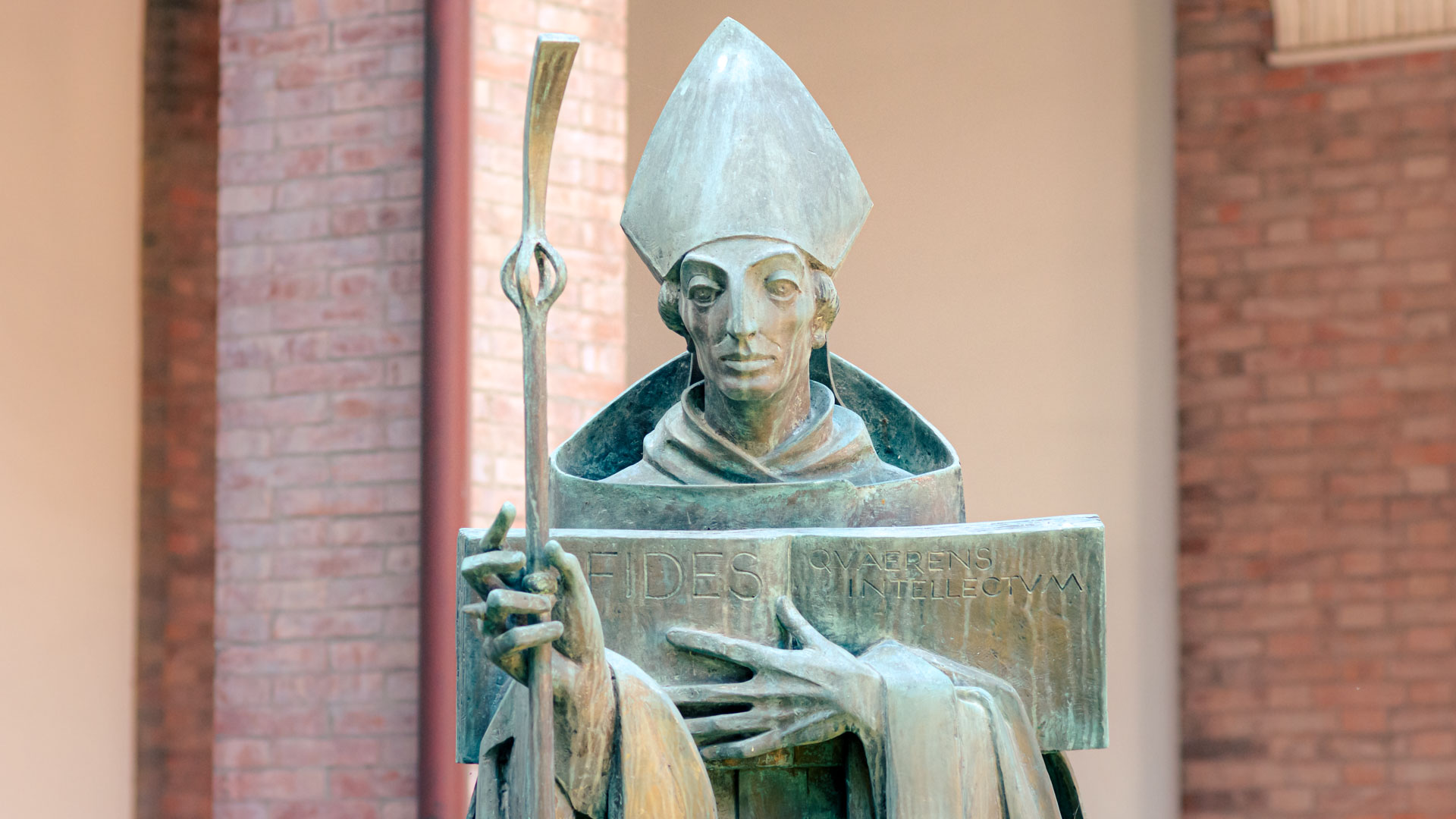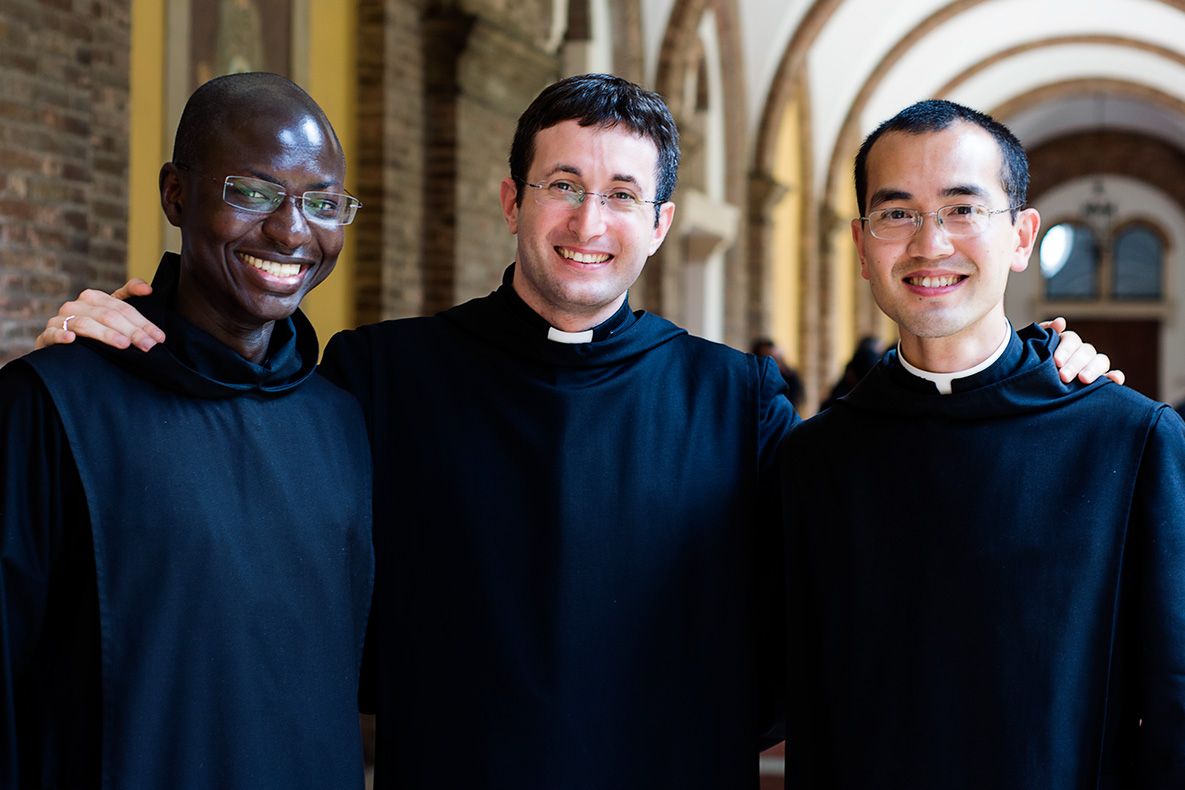28 March 2025
The Pontifical Atheneum Sant’Anselmo in Rome is hosting the international exhibition “Fra qua e là. Immagini dalla prigionia” (Between here and there. Images from prison) from 14 March to 16 May 2025. Organized by the Faculty of Philosophy of Sant’Anselmo and Art and Prison e.V. under the patronage of Her Royal Highness Hereditary Princess Sophie of Liechtenstein, the exhibition showcases art created by incarcerated individuals from 53 countries.
In the catalogues of the exhibit, Dean of the Faculty of Philosophy Andrea De Santis, reflecting on the title, asks: “‘Where is ‘here’ and where is ‘there’, what is ‘here’ and what is ‘there’ – and thus: who is here and who is there’? Is freedom here, imprisonment there? Where, and who are the free? Where, and who are the prisoners?'”. This philosophical inquiry sets the stage for considering the blurred lines between freedom and confinement, echoing Plato’s concept of humanity’s initial “imprisonment” in the cave of illusion.
Deacon Heinz-Peter Echtermeyer, Chairman of Art and Prison e.V., questions: “‘So how can we still speak of ‘hope behind bars’ when we look at the ‘pictures from prison’ presented here? Can art created under the conditions of incarceration and thus unfreedom truly be considered art? And if so, does this art not also represent the experience of a kind of freedom that, in the creation of the artwork itself, expresses itself in diverse ways and cannot be confined even under conditions of deprivation of liberty?'”. The artworks displayed express diverse “hopes,” reflecting personal struggles and longings.
Her Royal Highness Hereditary Princess Sophie of Liechtenstein highlights the project’s social impact: “By engaging with the themes addressed in the areas of deprivation of liberty and correctional facilities, personal prejudices can thus be questioned. New perspectives of social co-responsibility come into focus.”. The art serves as a powerful mirror to society, revealing hope amidst hardship.
Pro-Rector Prof. Dr. Laurentius Eschlböck, at the inauguration, noted the exhibition’s connection to the Jubilee Year’s theme: “Reflecting, in fact, on hope, a theme so rich in implications and symbols, as desired by the Holy Father Francis for the Jubilee, means rediscovering the immense value it holds in places where it seems to be lacking, at least in appearance, such as the prisons from which these beautiful works come.”.
The exhibition extends beyond Sant’Anselmo, traveling to other locations in Rome. Preparatory study days explored the philosophical and theological dimensions of art in detention, considering whether “‘art without freedom’ is not a contradiction in itself?”. “Fra qua e là. Immagini dalla prigionia” ultimately encourages reflection on universal themes of freedom, confinement, and the enduring power of the human spirit.
28 March 2025
The Pontifical Atheneum Sant’Anselmo in Rome is hosting the international exhibition “Fra qua e là. Immagini dalla prigionia” (Between here and there. Images from prison) from 14 March to 16 May 2025. Organized by the Faculty of Philosophy of Sant’Anselmo and Art and Prison e.V. under the patronage of Her Royal Highness Hereditary Princess Sophie of Liechtenstein, the exhibition showcases art created by incarcerated individuals from 53 countries.
In the catalogues of the exhibit, Dean of the Faculty of Philosophy Andrea De Santis, reflecting on the title, asks: “‘Where is ‘here’ and where is ‘there’, what is ‘here’ and what is ‘there’ – and thus: who is here and who is there’? Is freedom here, imprisonment there? Where, and who are the free? Where, and who are the prisoners?'”. This philosophical inquiry sets the stage for considering the blurred lines between freedom and confinement, echoing Plato’s concept of humanity’s initial “imprisonment” in the cave of illusion.
Deacon Heinz-Peter Echtermeyer, Chairman of Art and Prison e.V., questions: “‘So how can we still speak of ‘hope behind bars’ when we look at the ‘pictures from prison’ presented here? Can art created under the conditions of incarceration and thus unfreedom truly be considered art? And if so, does this art not also represent the experience of a kind of freedom that, in the creation of the artwork itself, expresses itself in diverse ways and cannot be confined even under conditions of deprivation of liberty?'”. The artworks displayed express diverse “hopes,” reflecting personal struggles and longings.
Her Royal Highness Hereditary Princess Sophie of Liechtenstein highlights the project’s social impact: “By engaging with the themes addressed in the areas of deprivation of liberty and correctional facilities, personal prejudices can thus be questioned. New perspectives of social co-responsibility come into focus.”. The art serves as a powerful mirror to society, revealing hope amidst hardship.
Pro-Rector Prof. Dr. Laurentius Eschlböck, at the inauguration, noted the exhibition’s connection to the Jubilee Year’s theme: “Reflecting, in fact, on hope, a theme so rich in implications and symbols, as desired by the Holy Father Francis for the Jubilee, means rediscovering the immense value it holds in places where it seems to be lacking, at least in appearance, such as the prisons from which these beautiful works come.”.
The exhibition extends beyond Sant’Anselmo, traveling to other locations in Rome. Preparatory study days explored the philosophical and theological dimensions of art in detention, considering whether “‘art without freedom’ is not a contradiction in itself?”. “Fra qua e là. Immagini dalla prigionia” ultimately encourages reflection on universal themes of freedom, confinement, and the enduring power of the human spirit.
Altre Notizie
Can art truly be created without freedom? This exhibition challenges perceptions and offers a glimpse into the strength of the human spirit. Story and opening reception photos here.
At a luncheon held on 2 February, Abbot Primate Jeremias expressed our profound thanks to Fr. Dorotej as we welcomed Fr. Sebastian. Read more about Sebastian’s inspiring path.
Sant’Anselmo is delighted to welcome pilgrims visiting during the Holy Year 2025. We are offering guided tours of our historic church, cloister, and other key areas in seven languages. Story and contact information here.

